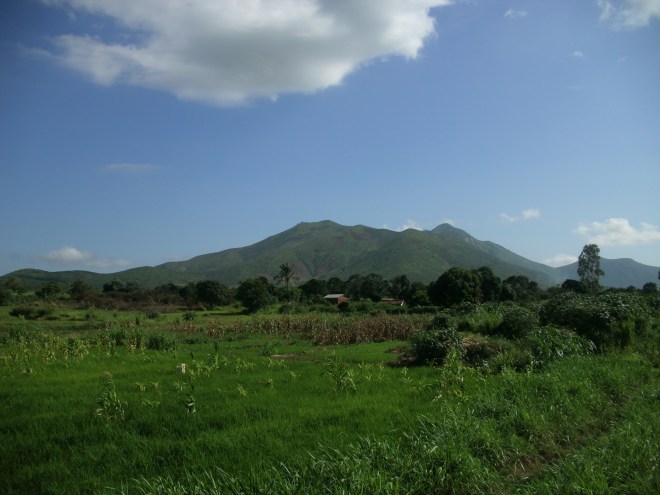
The journey from Malawi to Tanzania was uneventful and mellow. We crossed magnificent mountain passes in the Great Rift Valley and passed through miles of lush rolling highland tea estates. Tanzania’s rich soil supports abundant subsistence crops including tea, bananas, maize, passion fruit, tobacco, sisal, pineapple, and peanuts.

As usual, the land border crossing wasn’t my favorite… With each new country of course we also changed currency, and since we traveled through nine different African countries, the experience was slightly dizzying – at least for me.

Tanzania is one of the African countries that only accept USD as payment for visas. Knowing I would be in Africa for some time I didn’t travel with much cash in USD. I had to exchange local currency into USD to pay the Tanzanian visa fee.

Most Europeans in the safari group were traveling with USD. Being the only American it seemed ironic that I was the one who had to exchange money to get USD! One Tanzania Shilling (TZS) equals about .00046 USD. Tanzania’s fee for a tourist visa is $50 for everyone except US citizens, who must pay $100.

Mountainous Tanzania is home to Africa’s tallest peak – mysterious and breathtakingly beautiful Mt. Kilimanjaro. Unfortunately, Mt. Kilimanjaro was not on our safari itinerary but we admired the gorgeous mountain from afar.

Northern Tanzania has two of Africa’s most beautiful and well-known lakes – to the east the largest, Lake Victoria, and to the west the deepest, Lake Tanganyika. Tanzania’s vast central plateau boasts impressive savanna grasslands and plains.

Serengeti Plain covers 12,000 sq. mi. and Ngorongoro Crater is the world’s largest intact caldera. Its history is an amazing and fascinating story. The crater forms a spectacular, fertile vegetation bowl of about 102 sq. mi. – a magnet for animals! Exotic Zanzibar Island lies along Tanzania’s hot, humid Indian Ocean coast. Zanzibar, Serengeti, Masai Mara, and Ngorongoro are future stops along our safari route!

Tanzania’s climate is tropical, but the highlands are cool with seasonal temperatures ranging between 50 and 70 degrees. Moderate temperatures are ideal for growing tea. Tanzania’s hottest season occurs between November and February when temperatures often exceed 90 degrees. The coldest season is between May and August when temperatures drop below 60 degrees.


Our overnight camp at Kisolanza Farm was outside the city of Iringa. Kisolanza is a fully working farm with herds of cattle and sheep. Some of the crops grown on the farm include vegetables, maize, artemisia, and hay.

Following a long day on the road we enjoyed dinner and a quiet Tanzanian evening at a Masai restaurant. The delicious meal featured local cuisine, including an African staple – pap. Our Kisolanza hosts, a British couple who immigrated to Tanzania, were friendly and welcoming.

After dinner we rested and early the next morning headed for Mikumi National Park, which is about 170 miles west of Dar es Salaam. Although I’ve loved every game park we visited, Mikumi is truly a special place. At 1,250 sq. miles it’s the fourth-largest park in Tanzania.











Mikumi Park’s Mkata Floodplain is popular for viewing birds as well as large, powerful antelope like eland, kudu, and sable. Antelope graze the miombo grassland savanna foothills bordering two spectacular mountain ranges – the Udzungwa and Uluguru. Other animals spotted during the game drive included lion, zebra, hippo, cheetah, wildebeest, giraffe, impala, buffalo, and elephant!


The Park’s natural lighting, sunrises, and sunsets are spectacular. The vegetation included seasonally flooded grasslands, woodland, and riverine forest known for unique flora and fauna.


Wifi and wonderful beasts! Thanks for sending your photos to us.